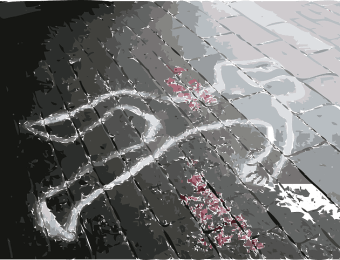
Three books I’ve read lately take place in the countries of our neighbors to the south. There Are No Happy Loves is the third in a series by Sergio Olguín that features irrepressible and libidinous investigative reporter Verónica Rosenthal. This time she tangles with a shady adoption ring run by the Catholic Church. Annamaria Alfieri’s historical mystery, Invisible Country, is set in Paraguay, a country whose history I knew less than nothing about, so appreciated the care with which she described that world. And, finally, The Lisbon Syndrome, by award-winning Spanish writer Eduardo Sánchez Rugeles, is not much about the Portuguese capital, but instead about the chaos in Venezuela, home to a large group of Portuguese émigrés.
There Are No Happy Loves Once again, Rosenthal happens upon a potentially outrageous crime in which the pursuit of justice starts her reportorial juices—and reader interest—going. Once again, her love affair with the lawyer Federico sputters along tantalizingly. Two of the three vignettes that begin the book turn out to be intimately related. A children’s book author named Darío Valrossa is driving his extended family home one night, when a terrible three-vehicle crash occurs involving a fuel truck. Everyone but the author dies at once, and he is left with terrible scars, the worst of which affect his mind and spirit. And, Federico, part of a team on late-night stake-out at the port of Buenos Aires that expects to confiscate a large cocaine shipment, instead seizes a truck filled with a grisly cargo. The previous two books in the series, also reviewed here, were The Fragility of Bodies (2019) and The Foreign Girls (2021). Translated by Miranda France.
Invisible Country Alfieri’s story, set in 1868, describes the meager lives of a small village as the Paraguayan economy is devasted by its disastrous war with its much larger neighbors, Brazil and Argentina, as well as Uruguay. Most men ages eight to eighty are dead. The village priest suggests the local women should abandon the conventional religious strictures and have sex with whoever is left, in order to repopulate the town. You can imagine the reaction. Meanwhile a murdered body is found in the church, and everyone is afraid the blame will be assigned based on politics, not evidence. In the midst of everything, young love finds a way to thrive. (The painting is from the war’s Battle of Tuyuti by Cándido Lopez.)
The Lisbon Syndrome In this novel, set in the near future, Portugal is hit by a giant asteroid and essentially disappears. The many Portuguese who have relocated to Caracas are heart-broken, knowing they can never go home. As a consequence, the disruptions and violence of the dysfunctional Venezuelan government rankle all the worse. It’s a time of student unrest in Caracas, and a popular theater teacher must figure out how boldly to oppose the ruling forces. Critics note the book’s wry humor, and call it “the most trenchant contemporary novel to offer a glimpse of life and death in Venezuela.” Worse than you thought. Translated by Paul Filev.












 A panel at last weekend’s Deadly Ink 2015 conference represented a spectrum of views about the research lengths mystery writers go to. At the “as factual as possible” end of the spectrum was K.B. Inglee, a writer of historical mysteries who is also a history museum docent and reenactor (talk about living your research!), closely followed by Kim Kash, who seeks a realistic recreation of Ocean City, Maryland, where her fictitious characters and stories play and play out. Setting her mysteries there began when she wrote a tour guide for the city, a compilation of facts and contacts that has since served her well.
A panel at last weekend’s Deadly Ink 2015 conference represented a spectrum of views about the research lengths mystery writers go to. At the “as factual as possible” end of the spectrum was K.B. Inglee, a writer of historical mysteries who is also a history museum docent and reenactor (talk about living your research!), closely followed by Kim Kash, who seeks a realistic recreation of Ocean City, Maryland, where her fictitious characters and stories play and play out. Setting her mysteries there began when she wrote a tour guide for the city, a compilation of facts and contacts that has since served her well.